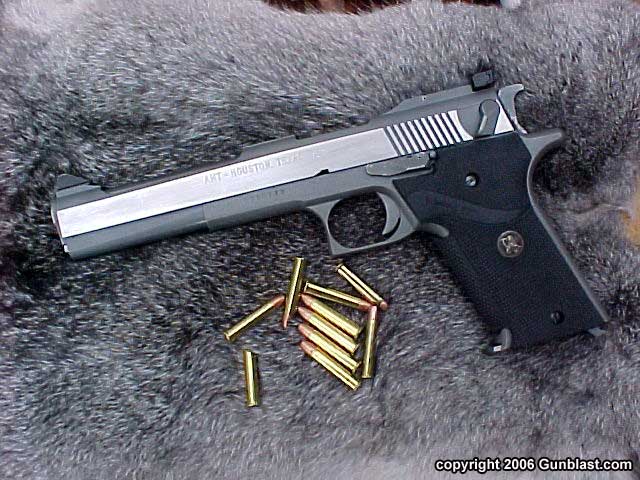I'm just wondering why Glock, Taurus, Ruger, S&W, etc. are not making a 22 mag. auto?
Because the higher chamber pressure requires a unique type of action, in semi-auto handguns.
.22 WMR is a bit of a beast to cycle reliably in semi-autos. The problems run from one end of the spectrum, to the other.
Sometimes, it tends to blow actions open, before the bullet even leaves the barrel. (The same problem that killed the semi-auto .17 HMR rifles.)
Other times, it grips the chamber too well, and doesn't impart enough momentum into the slide, to achieve full cycling.
To counter that, you need a very heavy bolt/slide, or you need to assist the case in 'gripping' the chamber until pressure drops (bullet leaves the barrel).... while, at the same time, making sure the case doesn't stick, so the action can fully cycle.
The PMR-30 and AM II use similar designs - they have ribbed or dimpled chambers, to help grip the case and keep the action from opening before pressure drops; but they also use "gas channeling" to assist in reducing chamber grip once the bullet has started down the barrel.
On top of that, Winchester traditionally thought .22 WMR was a rifle cartridge and CCI thought .22 WMR was a handgun cartridge. Modern loads go outside those boundaries, for both companies, but there are still vast differences in performance and powder burn characteristics between different loads.
One 40 gr SP load may perform dramatically different than another 40 gr SP load, even if they claim to have the same muzzle velocity.
That's why every (semi) successful .22 WMR semi-auto handgun was designed around one or two specific loads, with owners being told to shoot nothing else. (Winchester for AMTs, one Winchester and one CCI load for PMR-30s.)
In short...
.22 WMR is a nightmare make function reliably in semi-auto handguns. So, most companies don't even try.

